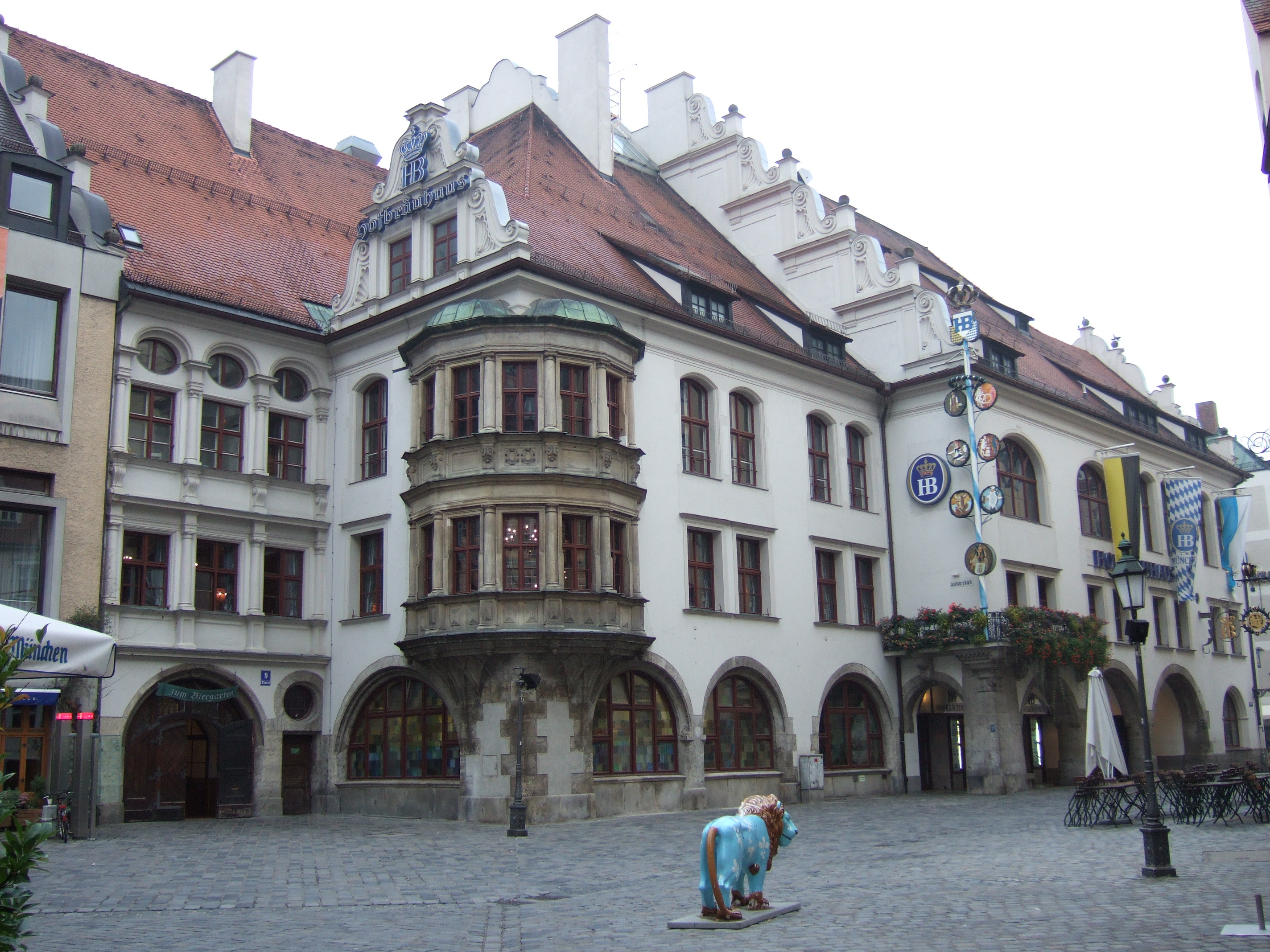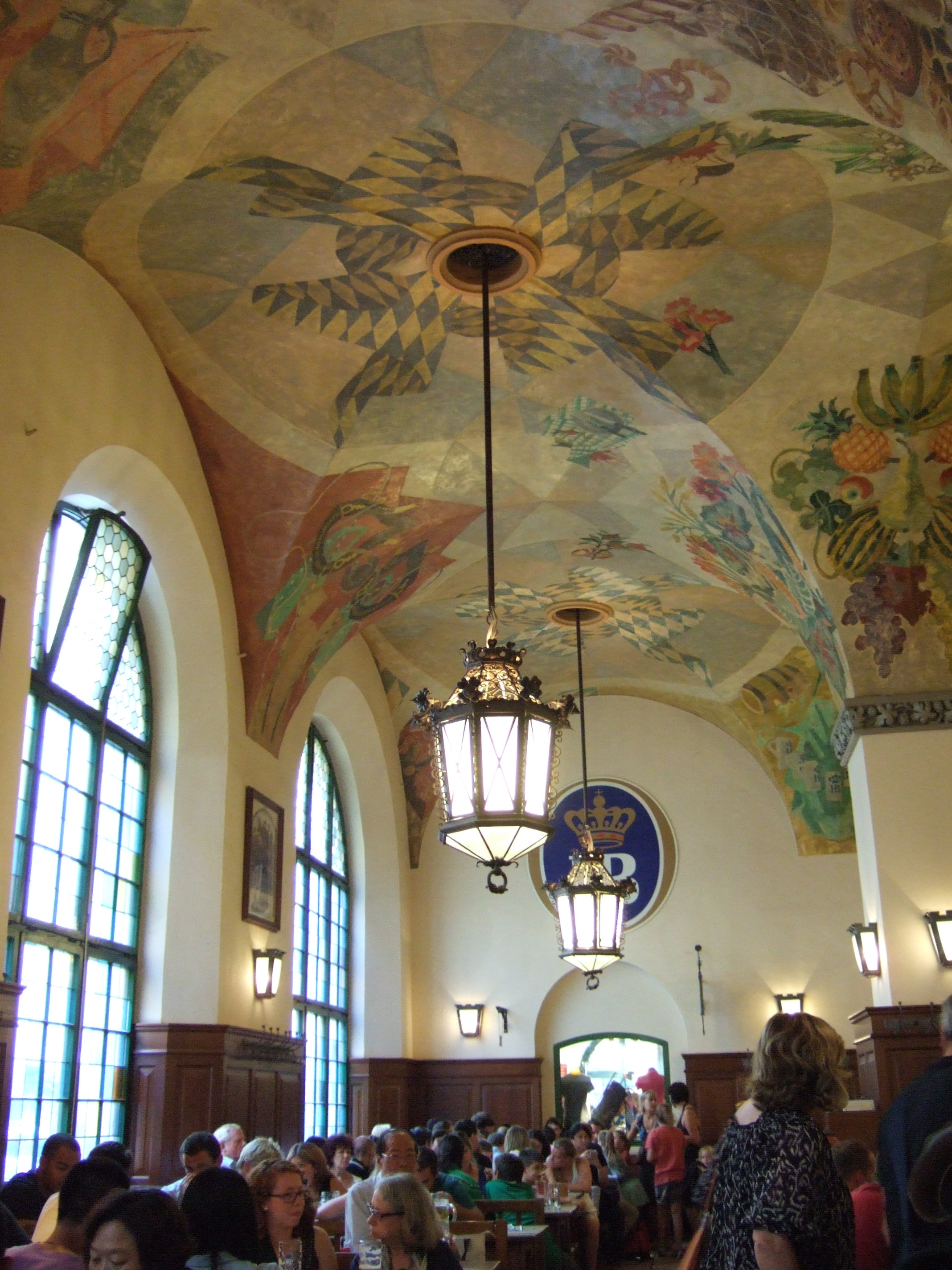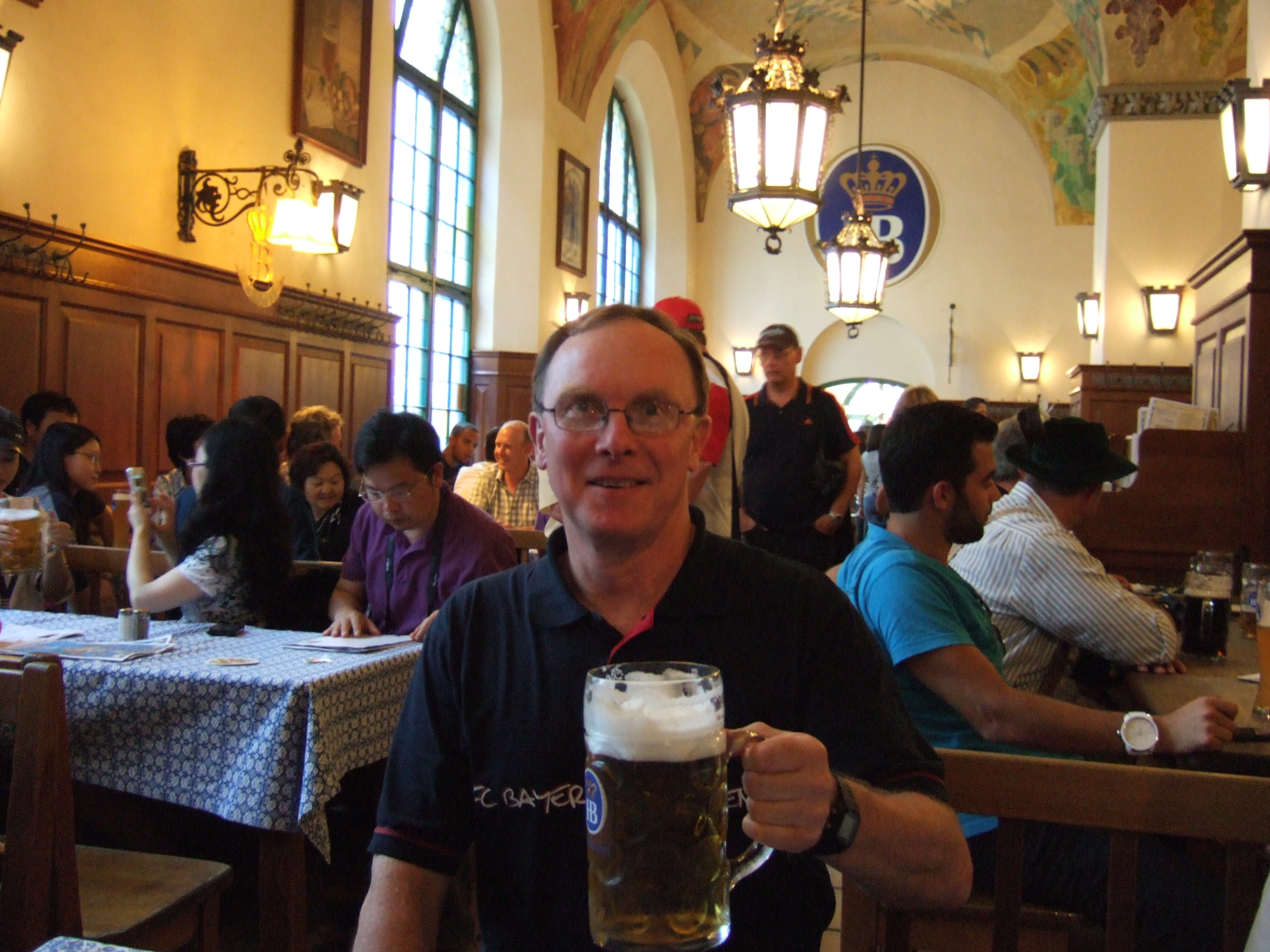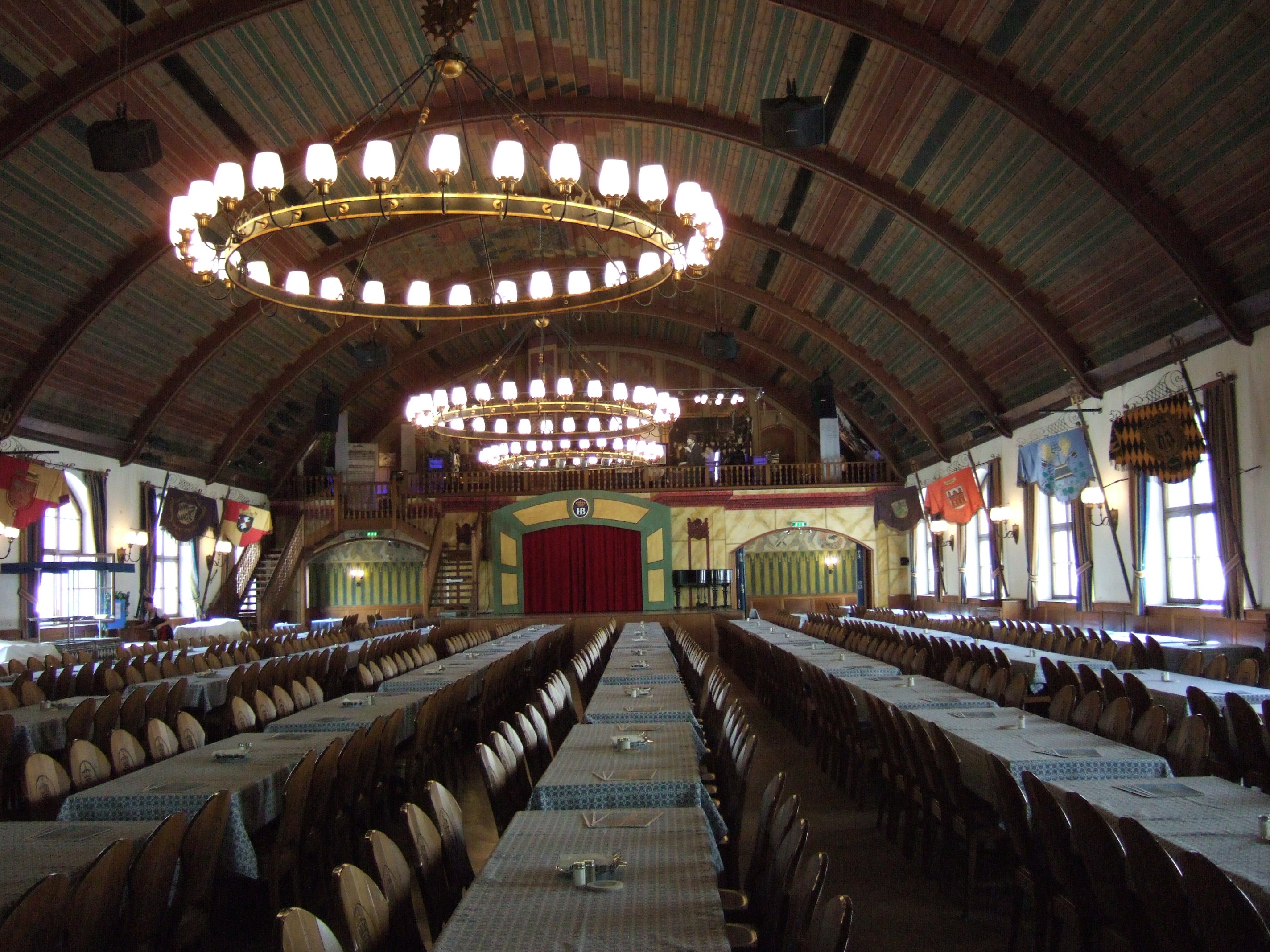Author Guest Post: David Ian Hall
Politics and the Hofbräuhaus: the founding of the NSDAP, 24 November 1920
The Hofbräuhaus am Platzl is the most famous beer hall in the world, and today it is Munich’s greatest tourist attraction. Before Covid-19 more than 10,000 litres of beer were consumed every day by Münchners, visitors from other parts of Bavaria and Germany, and tourists from the rest of the world, all irresistibly drawn to this beer-drinking place of pilgrimage. All social classes and professions sit together at the long tables. The chances of sitting alone are somewhere between slim and non-existent. Beer is served in a Maβ, a one litre heavy glass mug, and the congenial and egalitarian atmosphere encourages conversation, often heard in multiple languages, and laughter, before everyone joins together in song singing In München steht ein Hofbräuhaus or Ein Prosit der Gemütlichkeit just before the band takes a well-earned break.

Opened by Ludwig I in 1830, the Hofbräuhaus was part of the Royal Brewery founded by Duke Wilhelm V in 1589 during the Protestant Reformation. Wilhelm V wanted to ensure that the Royal Court in Munich and later good Roman Catholic Bavarians had a secure supply of beer brewed in accordance with the Reinheitsgebot (Bavarian Beer Purity Law) of 1516. Bavarian beer is made using only hops, barley, malt, and pure water in the brewing process. This was controlled by the Court (Hof) through its own brewery (brauhaus) hence Hofbräuhaus. The building was redesigned in neo-Renaissance style in 1896. The ground floor contains the historic Schwemme, where the beer was once brewed, and where up to 1,300 guests can be seated at tables underneath the cross vaults and painted ceiling. On the first floor is the Festsaal, a similarly large but ceremonial hall for special events. During the years immediately after the First World War, the Hofbräuhaus and the other great beer halls in Munich were on the frontline of the fierce political battles between the left and the right for control of the city, Bavaria, and ultimately Germany.


On Tuesday evening, 24 November 1920, Adolf Hitler spoke to more than 2,000 people who had crammed into the Festsaal. Most were members of the Deutsche Arbeiterpartei (German Workers’ Party, DAP) but some 600 were communists and radical leftists. Under the motto: ,Was uns not tut!’ (‘What we need!) Hitler announced the creation of a new ethnic-nationalist party the Nationalsozialistische Deutsche Arbeiterpartei (National Socialist German Workers’ Party, NSDAP) and outlined the party’s 25-point programme. The party, Hitler claimed, aimed to unite all Germans and improve their lives by repealing the punitive peace treaties that ended the Great War and by introducing a series of populist programmes that reformed the economy, ended foreign immigration, deported all non-Germans, created a strong central government and a new peoples’ army, and denied Jews and registered ‘aliens’ (non-German residents) the right to hold public office. A few Communists disliked what Hitler had to say and attempted to shout him down. A small scuffle also broke out before Hitler’s bodyguards intervened and roughly manhandled the dissenters out of the hall. This fracas was the beginning of Hitler’s Saalschutzabteilung (meeting hall protection squad) the forerunner of the Sturmabteilung (Storm Department, SA).

After the Nazis took power in Germany, they commemorated the founding of the party annually on 24 February at the Hofbräuhaus with an elaborate anniversary celebration. Hitler was the main attraction. Up to 1941 he attended every year, delighting his ardent followers with a long speech on his own and the party’s achievements. Hitler attended and spoke at the event for the last time in 1944. At the commemoration in 1945, marking the party’s 25th and last anniversary, Hermann Esser, Hitler’s friend and party comrade since the early days, read Hitler’s speech. The party faithful wanted to believe in Hitler and victory but the time for Nazi celebrations was over. By the war’s end the Hofbräuhaus was a burnt-out shell. Restorations began in 1950 and took most of the decade to complete. Today, the Hofbräuhaus, rebuilt in its neo-Renaissance design, epitomises Munich’s beer hall culture of democratic amiability and Gemütlichkeit, just as its former Royal patrons intended. The Hofbräuhaus offers great beer, plentiful Bavarian food, and an atmosphere that is as close to Oktoberfest as being at the annual autumn festival. For sheer enjoyment and fun, the next time you are in Munich go to the Hofbräuhaus, hoist a Maβ, and join in a round of “Oans, Zwoa, Drei, G’suffa!”

You can order a copy of Hitler’s Munich here.

